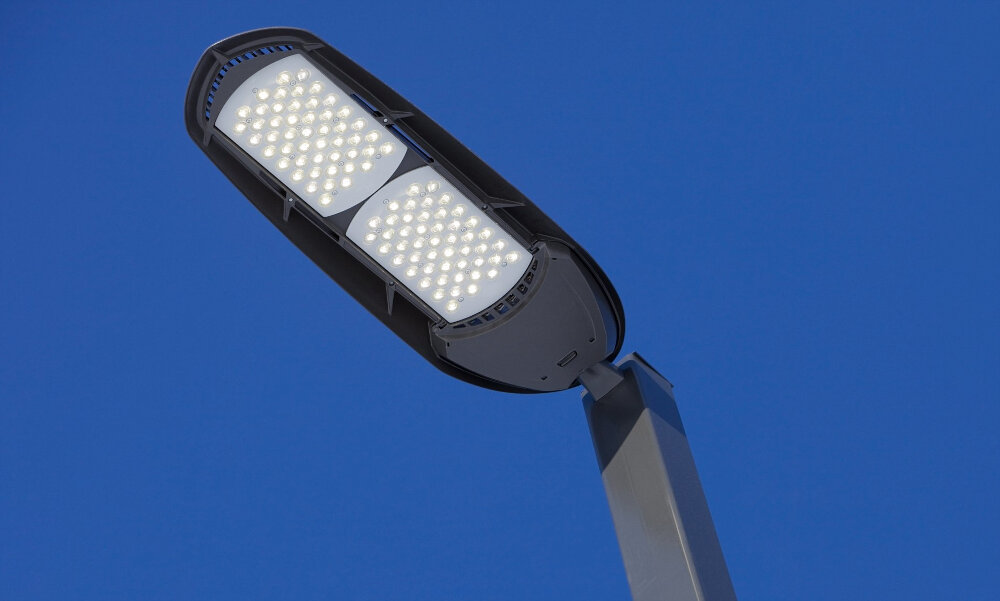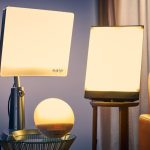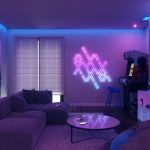LED Light Strip Power Consumption: How Much Electricity Do They Really Use?

LED light strips have become increasingly popular in recent years, offering homeowners and businesses a versatile and energy-efficient lighting solution. However, one of the most common questions that people have about LED light strips is how much electricity they use. Understanding the power consumption of LED light strips is crucial when it comes to choosing the right lighting for your needs, as well as for managing your energy costs. When it comes to LED light strip power consumption, there are several factors that can influence how much electricity they use. These factors include the length and type of the LED strip, the number of hours that the light is used each day, and the overall efficiency of the lighting system. By learning more about LED light strip power consumption, you can make more informed decisions about your lighting needs, as well as take steps to reduce your energy consumption and lower your energy bills.
What are LED Light Strips?

LED light strips are a versatile and cost-effective lighting solution for both residential and commercial spaces. These strips consist of a flexible circuit board with light-emitting diodes (LEDs) attached to it, which emit a bright and even light. LED light strips come in various colors and can be easily cut to fit specific lengths, making them an ideal choice for a wide range of applications. They are commonly used for accent lighting, under-cabinet lighting, and backlighting, among other purposes. One of the significant advantages of LED light strips is their low power consumption. LED technology is highly energy-efficient, and these strips use only a fraction of the energy consumed by traditional incandescent bulbs. The power consumption of LED light strips varies depending on their length, brightness, and color. However, on average, a 16-foot LED strip with 300 LEDs will consume about 24 watts of electricity per hour. This equates to approximately 0.024 kilowatt-hours (kWh) of electricity, which is significantly less than the power consumed by other types of lighting. Furthermore, LED light strips have a longer lifespan than traditional bulbs, making them a cost-effective and eco-friendly lighting solution.
LED light strips are a type of lighting that uses light-emitting diodes (LEDs) to produce light. These strips consist of a flexible circuit board with small, individual LED lights embedded in it. The circuit board is powered by a driver that converts the AC power from the wall outlet to DC power that is suitable for the LEDs. The LEDs themselves emit light when an electrical current flows through them, which is controlled by the driver. LED light strips are highly efficient because they consume very little power to produce light, which means that they use less electricity than traditional incandescent or fluorescent lights. Furthermore, LED light strips are versatile and can be used in a variety of applications, such as accent lighting, task lighting, and decorative lighting.
Understanding Power Consumption of LED Light Strips

LED light strips have become a popular lighting solution for both residential and commercial spaces due to their energy efficiency and versatility. However, understanding their power consumption is crucial in determining their impact on your electricity bill. LED light strips consume significantly less power compared to traditional incandescent bulbs, making them a more eco-friendly and cost-effective option. The power consumption of LED light strips is measured in watts per meter (W/m), and it varies depending on the brightness level and color temperature of the LED lights. It is essential to note that the power consumption of LED light strips is not a constant value, and it can fluctuate based on several factors. For instance, the length and width of the LED light strip, the type and quality of the power supply, and the frequency and duration of use can all affect its power consumption. Therefore, it is recommended to check the technical specifications of the LED light strip and its power supply to ensure they are compatible and efficient. Additionally, switching off the LED light strip when not in use or using them at lower brightness levels can significantly reduce their power consumption and extend their lifespan.
The power consumption of LED light strips is influenced by various factors that must be considered before purchasing and installation. One of the most critical factors is the length of the strip, as longer strips tend to consume more power. Additionally, the brightness level of the LED lights, which is measured in lumens, also affects power consumption. The higher the brightness level, the more energy the LED strip will use. Another factor to consider is the color temperature, as different colors require different amounts of power to produce. Lastly, the power supply used to operate the LED strip can also impact power consumption. It’s essential to choose a power supply that is compatible with the LED strip’s voltage and wattage to ensure efficient and safe operation. Understanding these factors can help individuals make informed decisions when selecting LED light strips for their lighting needs.
Calculating the power consumption of LED light strips is essential to estimate the amount of electricity they consume. The power consumption of LED light strips depends on various factors, including the voltage, wattage, and the number of LEDs per meter. Generally, the power consumption of LED light strips ranges from 2 watts to 14 watts per meter. To calculate the power consumption of LED light strips, you need to know the wattage of the strip, the operating voltage, and the length of the strip. By multiplying the length of the strip with the wattage per meter, you can get the total power consumption of the LED light strip. It is crucial to calculate the power consumption of LED light strips to make informed decisions about their usage and to save energy and money.
Comparing LED Light Strips to Traditional Lighting Options

LED light strips have become an increasingly popular lighting option due to their numerous benefits over traditional lighting options. One of the most significant advantages of LED light strips is their energy efficiency. LED strips consume significantly less power than their traditional lighting counterparts, which can lead to significant savings on electricity bills. This is because LED light strips convert a higher percentage of the energy they consume into light, while traditional lighting options waste a significant amount of energy as heat. LED light strips also have a longer lifespan, which means they need to be replaced less frequently, further reducing their environmental impact. Another advantage of LED light strips is their flexibility and versatility. Unlike traditional lighting options, LED light strips can be cut to fit any length or shape, making them ideal for a wide range of applications. They can be used for accent lighting, task lighting, or ambient lighting, and can be installed in a variety of locations, including under cabinets, in coves or alcoves, or even outside. LED light strips also come in a range of colors, from warm white to cool white and even RGB, allowing for a variety of aesthetic options. Overall, the benefits of LED light strips over traditional lighting options make them a smart and eco-friendly choice for anyone looking to save money and reduce their carbon footprint.
LED light strips have become increasingly popular in recent years due to their energy efficiency and versatility. Compared to traditional incandescent bulbs, LED strips use significantly less power, making them an excellent option for those who want to save on their electricity bills while reducing their environmental impact. LED light strips are also long-lasting, with an average lifespan of up to 50,000 hours or more, which means they require less frequent replacements and further reduce energy consumption. Additionally, LED strips come in a range of colors and brightness levels, allowing users to customize their lighting setup to suit their specific needs or preferences. Overall, LED light strips are an excellent choice for those looking for a cost-effective and eco-friendly lighting solution.
LED light strips have become increasingly popular in recent years due to their cost-effectiveness, energy efficiency, and versatility. These light strips use significantly less electricity compared to traditional lighting sources, making them an eco-friendly and wallet-friendly option for lighting up homes, gardens, and commercial spaces. LED light strips also have an extended lifespan and require less maintenance, reducing the overall cost of lighting systems. Furthermore, with the option of smart controls, LED light strips can be programmed to turn on and off at set times, further reducing energy consumption. Overall, the cost-effectiveness of LED light strips makes them a smart investment for those looking to save money on their energy bills while also reducing their carbon footprint.
Reducing Power Consumption of LED Light Strips

LED light strips have become increasingly popular in recent years due to their energy efficiency, versatility, and low maintenance cost. However, despite their many benefits, LED light strips can still consume a significant amount of power if not used efficiently. Fortunately, there are several ways to reduce the power consumption of LED light strips without compromising their performance or brightness. One effective way to reduce the power consumption of LED light strips is to use a dimmer switch or controller. This will allow you to adjust the brightness of the LED lights according to your needs, thereby reducing the amount of energy they consume. Additionally, using a timer or motion sensor can help to further reduce the power consumption of LED light strips by automatically turning them off when not in use. Another way to optimize energy efficiency is to choose LED light strips with a high luminous efficacy, which means they can produce more light with less power. It is also important to ensure that the LED light strips are installed correctly and that they are not obstructed by any objects, as this can cause them to use more power than necessary. In conclusion, LED light strips can be a great addition to any home or business, but it is important to use them efficiently to minimize power consumption. By using a dimmer switch or controller, a timer or motion sensor, and choosing LED light strips with a high luminous efficacy, you can significantly reduce your energy usage and save money on your electricity bills. With the right approach, LED light strips can provide all the benefits of traditional lighting while using significantly less power.
LED light strips are an energy-efficient lighting solution that has become increasingly popular in recent years due to their versatility and affordability. However, it’s important to keep in mind that LED light strips do consume power and can contribute to your overall energy bill. To reduce the power consumption of your LED light strips, there are a few tips you can follow. First, choose LED light strips with a lower wattage rating. Secondly, use a dimmer switch to adjust the brightness of your LED light strips according to your needs. Thirdly, turn off your LED light strips when they are not in use. Finally, choose LED light strips with a high energy efficiency rating and avoid leaving them on for extended periods of time. By following these tips, you can reduce the power consumption of your LED light strips and save money on your energy bill.
Conclusion

In conclusion, LED light strips have become a popular lighting option due to their energy efficiency and versatility. When it comes to power consumption, these lights use significantly less electricity than traditional incandescent bulbs, making them an eco-friendly choice for homeowners. However, it’s important to consider the length and brightness of the LED strip, as well as the wattage of the power supply, to accurately estimate the amount of electricity they will consume. By taking these factors into account, consumers can make informed decisions about their lighting needs while also reducing their carbon footprint. Overall, LED light strips are a smart and sustainable choice for anyone looking to brighten up their home while reducing their energy consumption.




